
記者/譯者
Meet the "national savior" on the other side of the earth: Chiang Kai-shek on the streets of Paraguay
Originally published in Corner International
Paraguay has at least two special meanings for any Taiwanese.
First of all, Paraguay is the "antipodes" (Antipodes; 訓, sound ㄓˊ) of Taiwan. What is the antipodal point? Imagine that all of us living on earth are actually standing on a ball. If we drill down into the ground, straight through the center of the earth, we will always end up on the other side of the earth back to the surface. These two endpoints are called "antipodal points" by geographers, and the line connecting them is the spherical diameter of the earth; so it is not difficult to guess that starting from Taiwan, no matter which direction you go, the farthest away from us The place is Paraguay.
As for the English Antipodes of the antipodal point, it consists of two Latin words: inverted, and the feet, both figurative and lovely-the two people standing on opposite ends of the earth, on the earth, are indeed standing with the soles of the feet facing the soles of the feet. on.
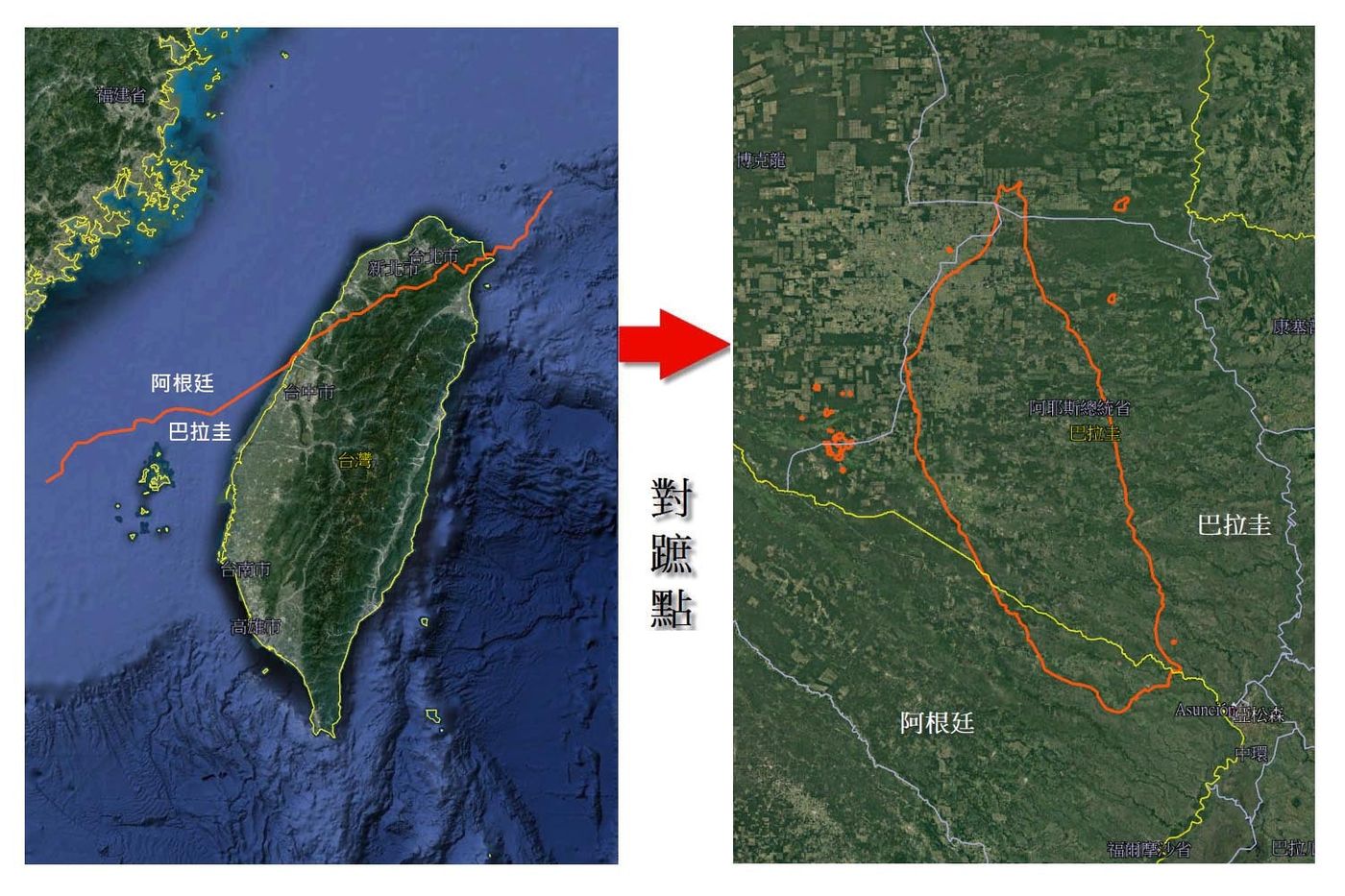
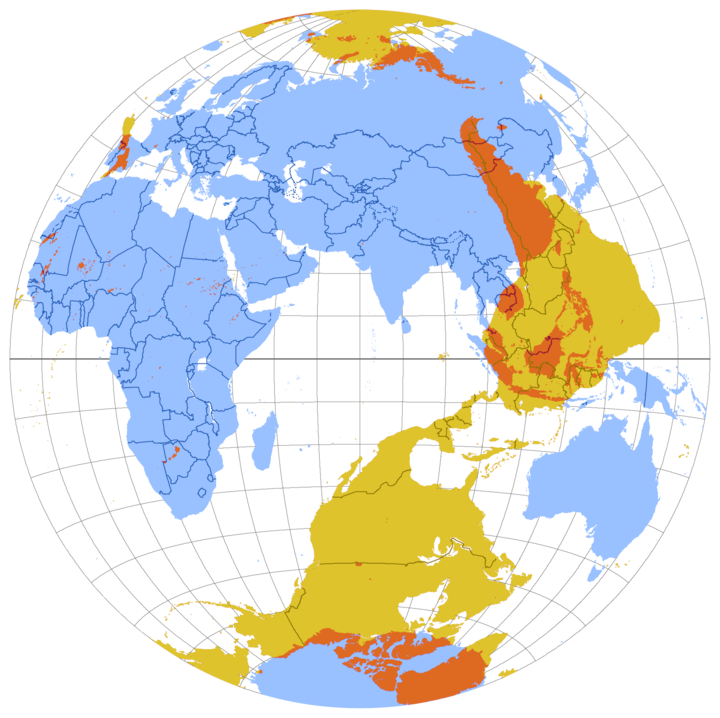
It is not easy to travel to the antipodal point of your hometown. Why? In addition to being the most distant destination on Earth, it is also because the Earth's water and land are unevenly distributed, and most of the land's antipodes actually fall on the sea. In this sense, Taiwanese are lucky: not only do we have the antipodal point on land ( imagine the American, British, French, German, Indian, if they want to visit the antipodal point of their hometown, there is nowhere to go? ), and it is very coincidental that Taiwan's antipodal point happens to be part of the " Formosa Province " in Argentina. This should be an Easter egg secretly buried by Freemasonry when designing this world. XD
Another special significance is that Paraguay is one of the only 22 countries that the Republic of China has diplomatic relations with, and it is also the only country that the Republic of China has diplomatic relations with in South America. In other words, the Republic of China, which is "not well-liked", actually made a "friend" in the place farthest away from itself. The representative office of the Republic of China in Paraguay can justifiably be listed as "embassy" and "consulate", instead of using ambiguous and semi-official "economic and cultural offices" to take into account the political correctness of the host country. For Taiwanese who are used to passports not being recognized and visas often being issued on separate sheets, the embassy from their hometown is a spectacle. Many Taiwanese backpackers who come to Paraguay even regard the "Embassy of the Republic of China" as a tourist attraction , made a special trip to the pilgrimage.

The first time I entered Paraguay, it was by car from Bolivia. Paraguay, on the border with Bolivia, is a vast expanse of barren wasteland known as the Gran Chaco.
In the 1930s, it was a battlefield where Paraguayans and Bolivians fought each other, so it was also called the "Green Hell". Today, it seems that this title is worthy of its name. Because the geographical and climatic conditions are really uninhabitable, the Paraguayan government cannot even set up border guards on the border; after the car enters Paraguay, it has to travel more than 100 kilometers to find someone to stamp your passport. Welcome visitors official entry.
When I went through customs to check my luggage, the soldier in the undershirt glanced at my pale green passport, raised his eyebrows and asked:
China de Taiwán? (The China in Taiwan?)
I hurriedly replied, and at the same time I turned out the delicate belongings of my whole body to show him.
The soldier returned the passport to me: "I know you are not China Roja, they are not good friends of Paraguay", then bent down and rummaged through my backpack, telling the story. China Roja means "red China", which naturally refers to the "People's Republic of China", but the origin of "red" is the color of the passport cover that they have to read every day at work, or the code name of the political camp. I have no idea.

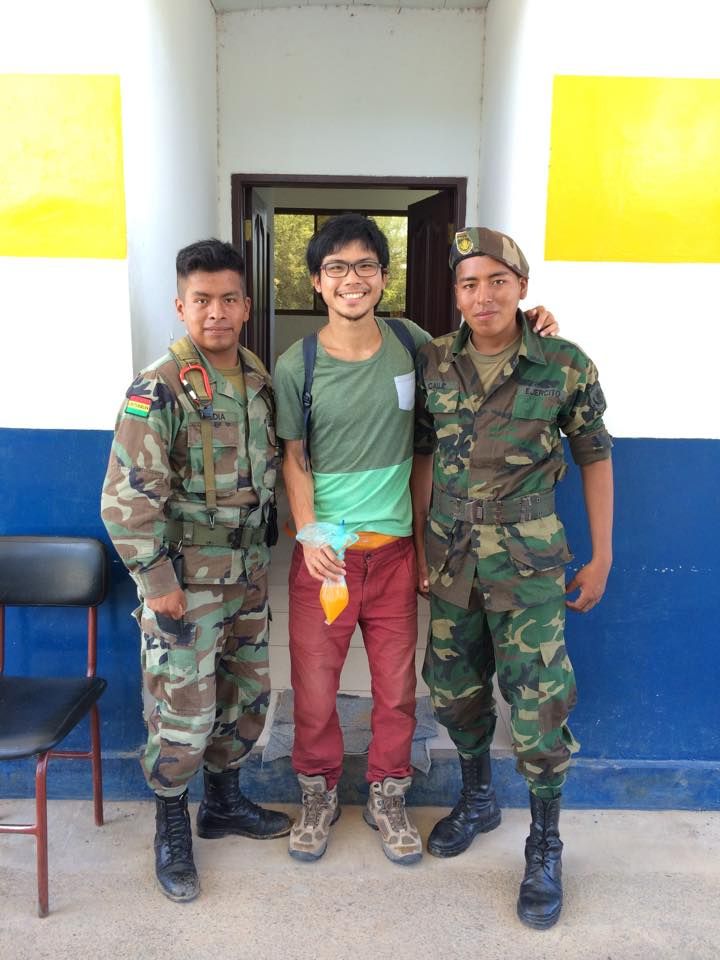
The soldier's words made me reminisce for a long time in the bumpy drive later. "The China of Taiwan", compared with the "Taiwan of China" that Taiwanese often try to resist the so-called "Taiwan of China", the affiliation of the two is just reversed. Apart from making me a little uncomfortable, I also vaguely feel that "the China of Taiwan" "This statement is somewhat paradoxical in logic.
In Paraguay, the "Republic of China" is the truly recognized China, that is to say, the China represented by the Taiwanese is the legitimate Chinese regime. Further thinking, if Taiwanese are abroad, if they must claim to be "from Taiwan" for practical reasons, it is often to avoid unnecessary troubles, such as declaring to border inspectors that "Taiwan passport holders do not need a visa"; after all, it is necessary to It is not easy to separate the "Republic of China" stamped on your passport from the China that has just emerged today and is more visible. However, when Paraguay, which recognizes the Republic of China, mentions "China", it should refer to this political entity on the island of Taiwan. Following this, do we still need to call ourselves from Taiwan, not from China?
As an ambiguous "political invention" of "one China, each statement", anyone can see the absurdity and contradiction in it: it is a rhetoric with empty connotations and no promises, but the empty symbols that can flexibly replace meanings are just right It is also the value of "one table, one table". In fact, the art of ambiguous rhetoric is closer to the essence of politics. Interestingly, the contention and rhetoric related to "orthodox China's representation" are in Paraguay, which "should recognize the Taiwanese version", which is particularly paradoxical.
After passing through several small towns reclaimed by German immigrants on the steppe, we finally arrived in Asunción, the capital of Paraguay.
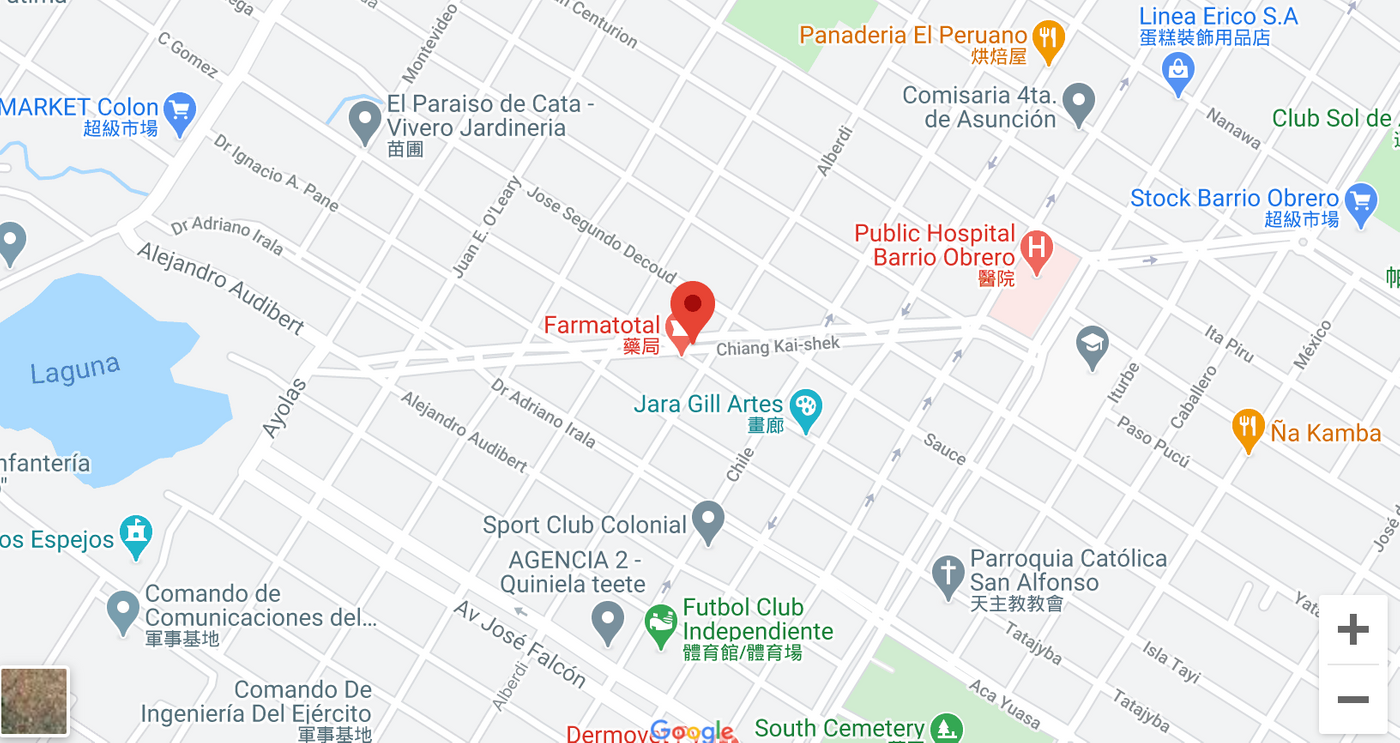
Asuncion is a city somewhat similar to Taipei. In the alleys, there are motorcycle assembly vehicles that use loudspeakers to attract business. The tone of their sales is exactly the same as the familiar "repair screens, screen doors, and glass replacements"; by the road, there are a large number of disrepaired colonial buildings, and low-rise buildings. Illegal buildings and self-employed settlements stand next to the country's power center and government agencies. In the 1970s, many immigrants from Taiwan, Japan and Korea added a little Asian flavor to this city on the magical continent of South America.
When I opened the map, I was attracted by the "Chiang Kai Shek" (Chiang Kai Shek) in the southwest corner of Ascension.
As the only staunch ally of "Free China" in South America, it would be natural for Paraguay to have a road to commemorate the leaders of its ally; but for me, to see a country that has gone through unfinished transformational justice and is beginning to be repositioned , being named on an exotic street is still an attraction - but not an easy one.
Starting from the downtown area, you have to walk two and a half kilometers under the scorching summer sun and pass through countless dilapidated neighborhoods to get here. Chiang Kai-shek Avenue is straight and spacious, and there is a small strip-shaped park in the middle of the road. In the neat road network, it is a 45-degree oblique line, so each street intersection is always complex and multi-directional. It's not a high-profile neighborhood: the closed-door homes are all piled up inconsequentially by the side of the road, as if ready to be melted away by the afternoon heat without anyone noticing.
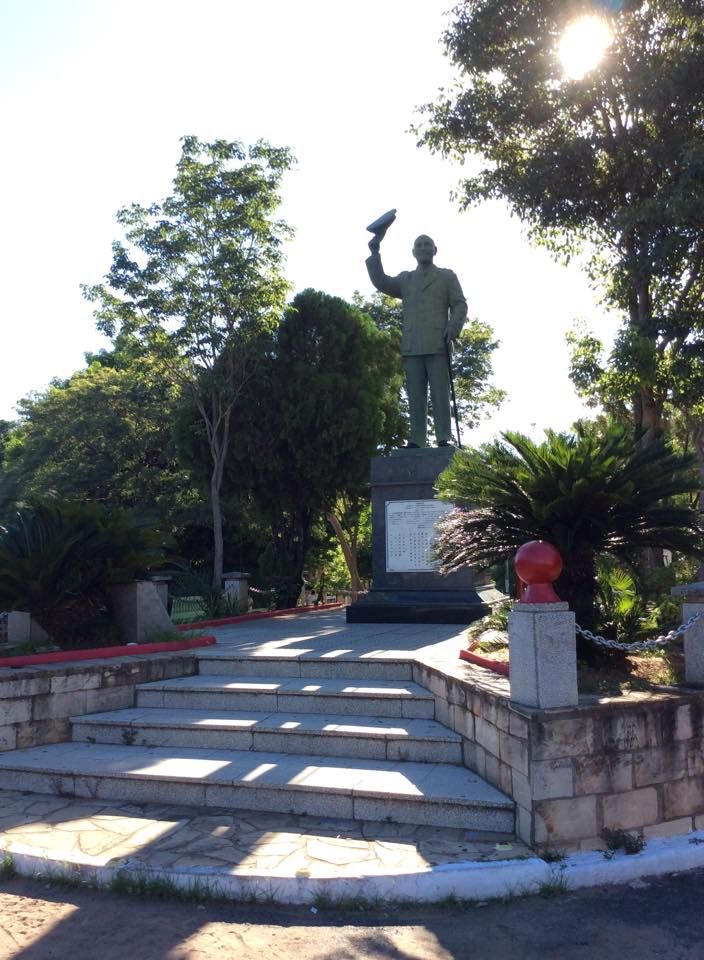
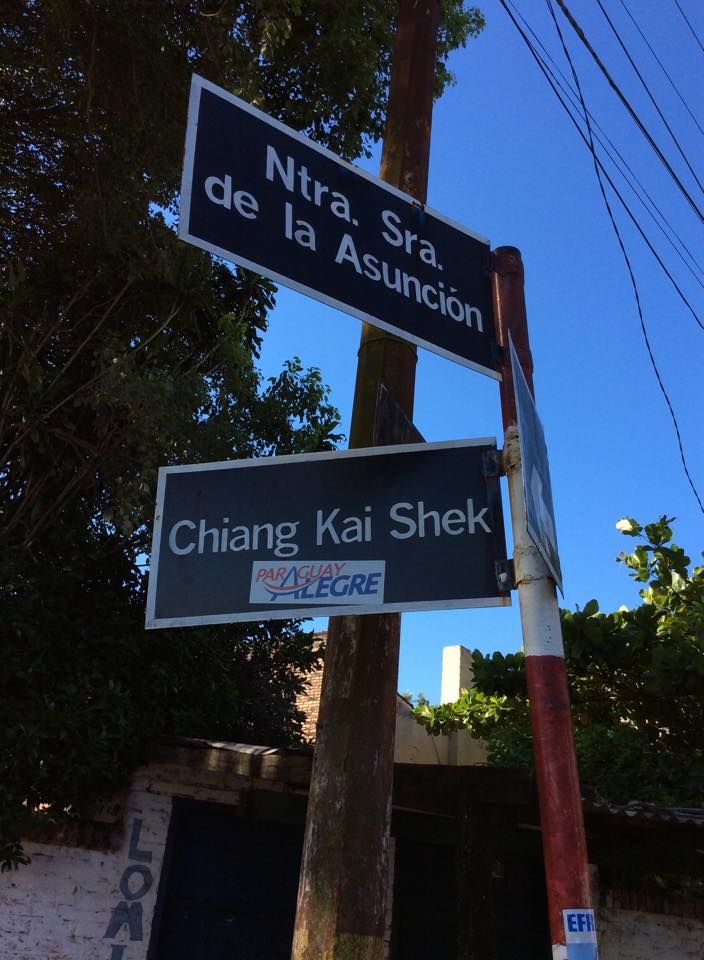
To my surprise, at the starting point of Chiang Kai-shek Avenue, there is a tall and straight figure that all Taiwanese are familiar with. Standing at Duke Jiang's feet, I stared in amazement at the huge bronze statue, projected by the scorching sun on the dusty streets of Paraguay. Occasionally, little kids chased the flying football past. Like the fate of most monuments in the world, Jiang Gong's bronze statue is ignored by people and becomes an unconscious part of the street scene. In addition to the bronze statues, there are also Chinese-style pavilions, seats, and street lamps in the strip park, which are marked with the words "Donated by the Embassy of the Republic of China". These sets of Chinese-style street furniture are supporting the commemorative function headed by Jiang Gong.
The Jiang Gong bronze statue is out of place here, reminding me of those "enclaves" formed by immigrants. However, in those immigrant enclaves, it is a group of living people who maintain memory and continue to prosper. They share weal and woe, and through life, they have rooted their cultural roots in the soil of other places; while on Chiang Kai-shek Avenue, those who built enclaves, It was a dead man no one knew. Place that bronze statue without even having a foundation.


In the park, there was a middle-aged man sitting in the shade, watching me take pictures with great interest, and asking me where I came from.
"Taiwan."
He scratched his head, probably a little distressed, not quite sure how to continue the conversation with this place name, "Where's that bronze statue? You come to see him? Where is he from? Korean? Chinese?"
I paused and thought about the complexity of the problem, which, given the temperature at the time, might have been enough to cause the two of us to get sunstroke together on the side of the road. So I decided to simply say, "No, he's also from Taiwan." In any case, the bronze statue is from Taiwan, which should be true.
Like other immigrant enclaves, the surrealism of "Chiang Kai-shek Avenue" is a contrast and dislocation deeply embedded in "everyday": the most common "Chinese" architecture, and the most common Paraguayan residential landscape. Therefore, to experience the absurdity here, the best way (and the most common way) is to slam into the "China of Taiwan" from a Paraguayan-style urban texture.
Finally, I walked from the beginning of the avenue to the end of the avenue with a little excitement. Not only amazed that such a boulevard and bronze statue would appear on a typical street in Paraguay, but also because this very ordinary Paraguayan street, simply because of the naming, the rough artefacts, and the collective memory of the parallel input, can become something of a A spectacle, and only a Taiwanese (or Chinese) can appreciate it.
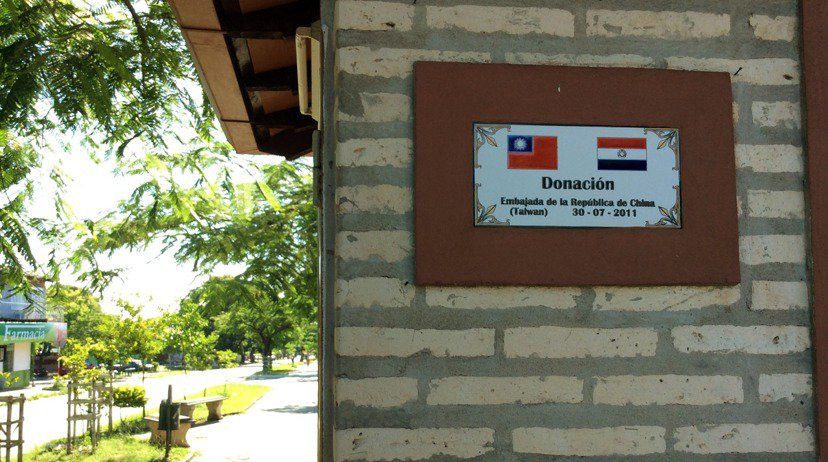
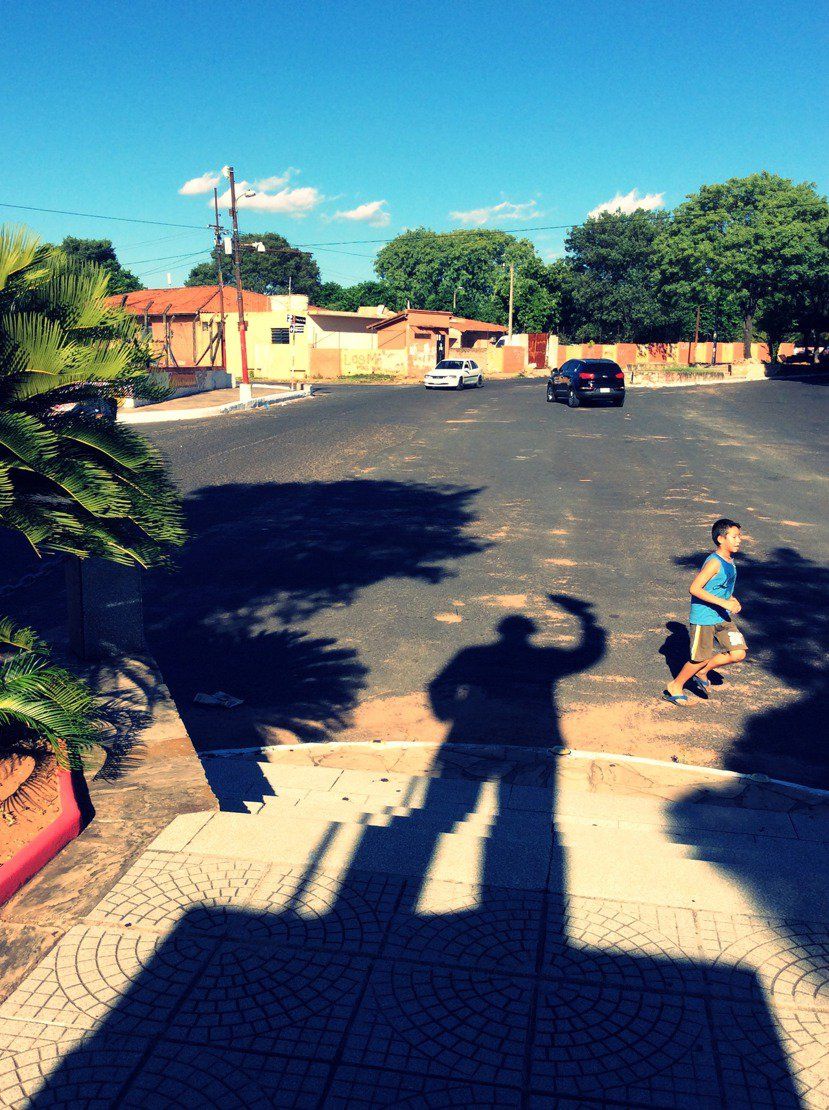
Like my work?
Don't forget to support or like, so I know you are with me..
Comment…